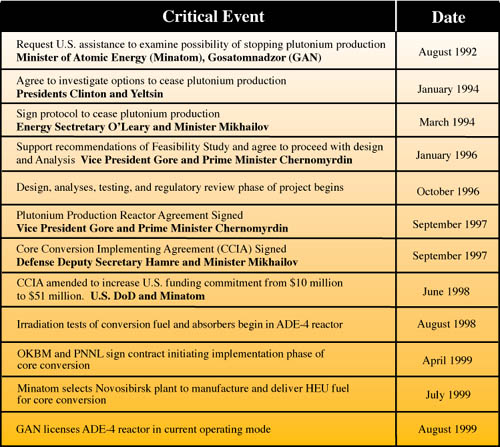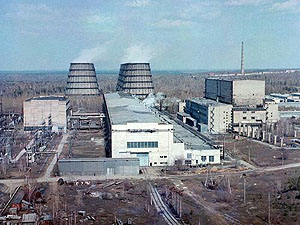|
 
Page 2 of 8 |
Background The U.S.
Department of Defense, in conjunction with the U.S. Department of Energy,
is conducting a cooperative project with the Russian Federation to stop
the production of weapons-grade plutonium in Russia.
Three reactors designed for plutonium production are still operating in Russia two near Seversk and one near Zheleznogorsk. These reactors also produce critically needed heat and electricity for the regions in which they are located, so they cannot simply be shut down to end the production of weapons-grade plutonium.
To solve this problem, the United States and Russia are collaborating on a core conversion project that changes the type of fuel used in these reactors to a type that will not produce weapons-grade plutonium. The new fuel type will allow these reactors to continue to provide critically needed heat and electricity.
The converted reactors will also burn Russian enriched uranium, which will further reduce the stockpile of weapons-grade materials. Finally, core conversion will improve nuclear safety at the Russian production reactors.
Critical Events on the Path to Core Conversion
 |

The Seversk
reactors, ADE-4 and ADE-5, started up in 1964 and 1965, respectively, and
share a common reactor building. The Seversk reactors have projected
remaining operating lifetimes through at least 2013. | 
The reactor near Zheleznogorsk, ADE-2, started up in 1964 and
is located inside a granite mountain. The Zheleznogorsk reactor has a
projected remaining operating lifetime through at least
2013. |
|
|






